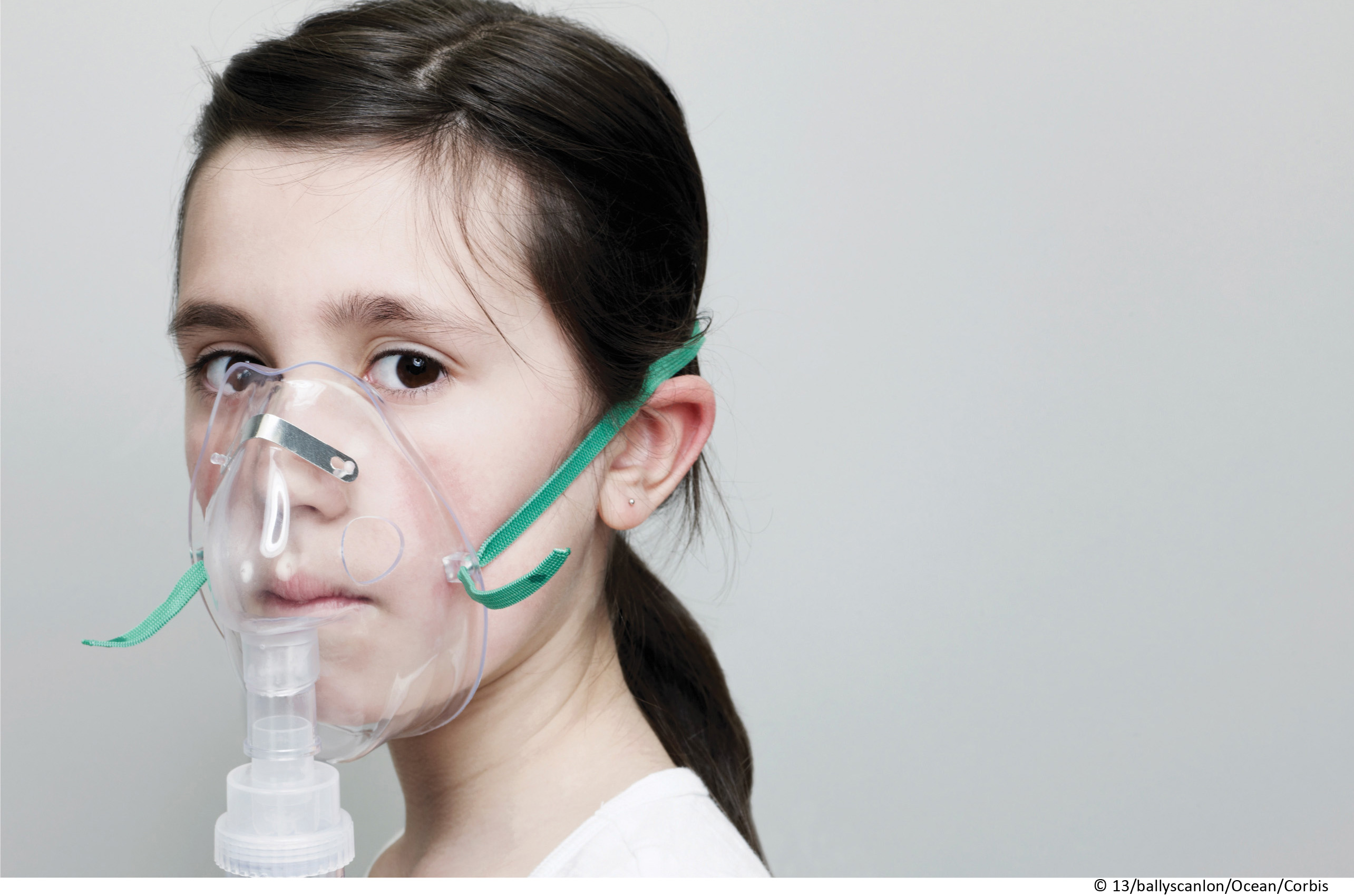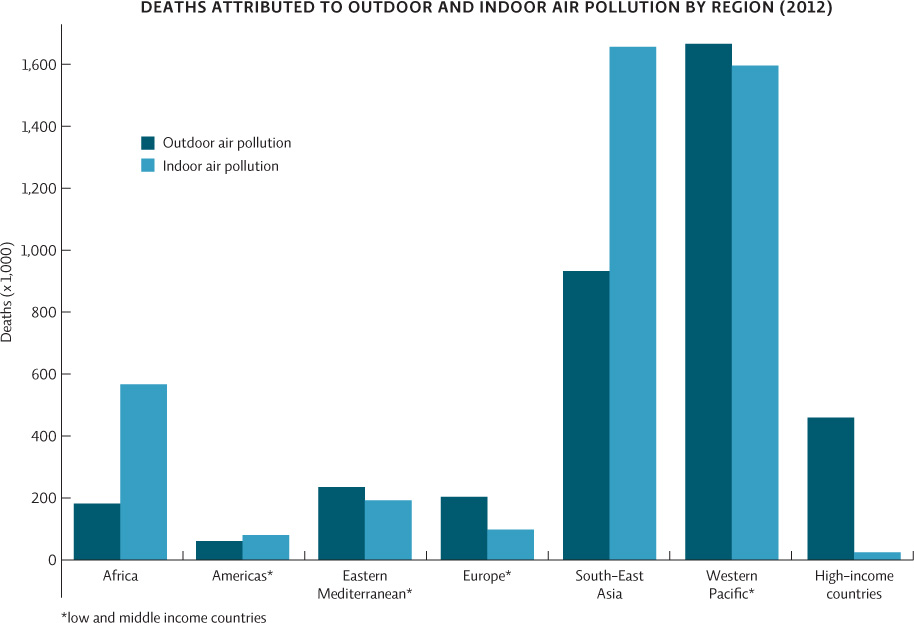Chapter Introduction
CHAPTER 20
AIR POLLUTION
THE YOUNGEST SCIENTISTS
Kids on the frontlines of asthma research

CORE MESSAGE
Air quality issues span the globe and have serious health effects for humans and other organisms; they also take an economic toll on individuals, industry, and society. Though there are natural sources of air pollution, most of it is caused by human actions. Pollutants generated in one area can travel great distances to affect other places. Policies that restrict air pollution and new technology to reduce it at the source can help us address air pollution problems.
AFTER READING THIS CHAPTER, YOU SHOULD BE ABLE TO ANSWER THE FOLLOWING GUIDING QUESTIONS
For 10-day stretches during 2003 and 2004, 45 asthmatic kids from smoggy Los Angeles county, some as young as 9, carried more than books in their backpacks. The kids, from two regions of the county, wore backpacks containing small monitors that sampled the air around them continuously as they went about their daily lives—going to class, playing with friends, having dinner with their families.
Children have a lot to teach us about asthma. It’s not just that the respiratory disorder more commonly afflicts kids than adults—which it does. (1 in 10 American children has asthma, compared to about 1 in 13 adults.) Or that research on children with asthma is on the rise. No, in fact, children are actually conducting some of the seminal research on asthma themselves.
asthma
A chronic inflammatory respiratory disorder characterized by “attacks” during which the airways narrow, making it hard to breathe; can be fatal.
And those personal air monitors are far more accurate than measurements taken at local monitoring stations, explains Ralph Delfino, an epidemiologist at the University of California, Irvine, who with his colleagues recruited the students to help collect the data. “A monitoring station can be many miles from where the subject lives, where they go to school, etc.—so that measurement may not represent their actual exposure very well,” he says. The air monitors used in Defino’s study detected levels of harmful pollutants in the air surrounding each individual child.
The children selected for the experiment were all currently being treated for mild to moderate asthma, and the area they all lived in had significant vehicle air pollution. Each child wore a backpack containing a monitor that would continuously sample the air around the child for 10 consecutive days; the monitor measured the amount of small particles and nitrogen dioxide (NO2), both of which are commonly present in vehicle emissions and are known to irritate lung tissue. Exposure to these pollutants can trigger asthma symptoms such as wheezing, coughing, or shortness of breath in sensitive individuals.
Ten times a day, the children exhaled into a special bag that assessed their breath for nitric oxide (NO), a chemical marker of airway inflammation—a telltale symptom of asthma.
When the 10 days were over, Delfino compared the types of pollutants to which the kids were exposed with their nitric oxide levels at similar points in time. The goal was to paint a picture of the types and amounts of pollutants that exacerbate asthma.

Asthma is a respiratory ailment marked by inflammation and constriction of the narrow airways of the lungs. Delfino’s work is important in part because asthma is one of the most common chronic childhood diseases in the United States and other developed nations, and it’s a major cause of childhood disability. The United States and the United Kingdom have the highest incidence of asthma, with more than 8% of each population diagnosed as asthmatic in 2011. Developing nations are also seeing a rise in asthma, especially in urban centers. In all areas, asthma rates are likely underdiagnosed.
In the United States, asthma is the leading cause of school absences and, hence, lost revenue for public schools, whose federal funding is based on attendance. The prevalence of childhood asthma more than doubled from 1980 to the mid-1990s, and though it has leveled off in recent years, with 6.8 million children and 18.7 million adults diagnosed, it still remains at historically high levels. (Because there are more adults than children, overall more adults have asthma, but a larger percentage of children have the disease.)
KEY CONCEPT 20.1
Air pollution is a serious problem that causes millions of deaths worldwide each year.
Researchers believe that air pollution—contaminants, either from natural sources or human activities, that cause health or environmental problems—may play a key role in the recent asthma spike. In addition, air pollution has been linked to cancer, infection, and other respiratory diseases—and it not only harms humans but also plants, other animals, and even buildings, bridges, and statues.
air pollution
Any material added to the atmosphere (naturally or by humans) that harms living organisms, affects the climate, or impacts structures.

As far back as the 1930s, scientists recognized a link between outdoor air pollution and human illness. In 1930, for instance, 63 people died and 1,000 were sickened in Belgium when a temperature inversion—a situation that occurs when the temperature is higher in upper regions of the atmosphere than in the lower, causing pollutants to become trapped near Earth’s surface—led to a sudden spike in lower atmospheric sulfur levels. And 1952 was the year of the famous Great Smog in London, England, when pollutants trapped in the lower atmosphere killed 4,000 people. INFOGRAPHIC 20.1
The World Health Organization (WHO) recognizes air pollution as a major threat to human health, especially cardiovascular disease (such as coronary heart disease and stroke) and respiratory disease (including chronic obstructive pulmonary disease [COPD], lung cancer, asthma, and respiratory infections). Outdoor air pollution caused and estimated 3.7 million premature deaths in 2012; indoor air pollution caused 4.3 million premature deaths.


It is easy to see how breathing unhealthy air affects the respiratory system, but why does air pollution affect the cardiovascular system?
One of the cardiovascular system's main jobs is to deliver oxygen to cells. When the respiratory system is impaired, the heart has to work harder to deliver oxygen to cells since less is coming in with each breath. Components of air pollution may also directly damage the heart and blood vessels.